Violet Pigments used in Watercolor
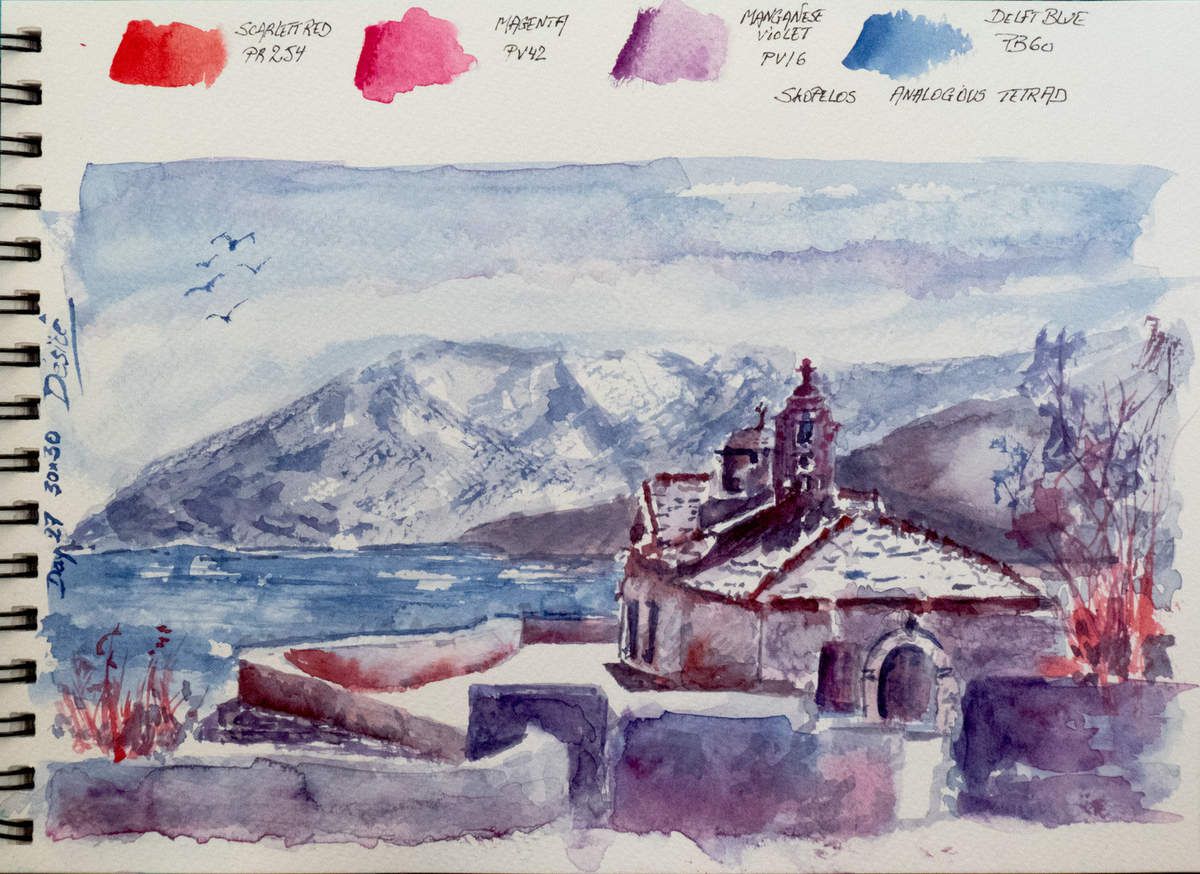
Violet, also called purple, is one of the oldest colors made by humans from natural resources. A Murex mollusk extract was used to make this extract which after undergoing a lacquered treatment became the most coveted dye of antiquity.
Given its complexity of manufacture and the amount of Murex needed, this lacquer was only reserved for the highest dignitaries, because extremely expensive.
From these facts, the purple color will remain a symbol of power and nobility. But is it really necessary to have this color in our pallets watercolor?
We know it's easy to get that color by mixing a red with a blue. I will show you the possibilities of getting this color in the next article, which will also show the results of mixing violet pigments with other primary and secondary ones.
In watercolor, apart from the field of floral painting, pure violet is not often used. But under impressionist tendencies we see a lot of painters use the purple in the shadows.
Some artists, especially Catherine Rey, use a purple mix (PB29 + PR83 or PV19), to create a sub-painting, because as powerful as the violet can be, passing glazes on the effect produces a real depth in the subjects.
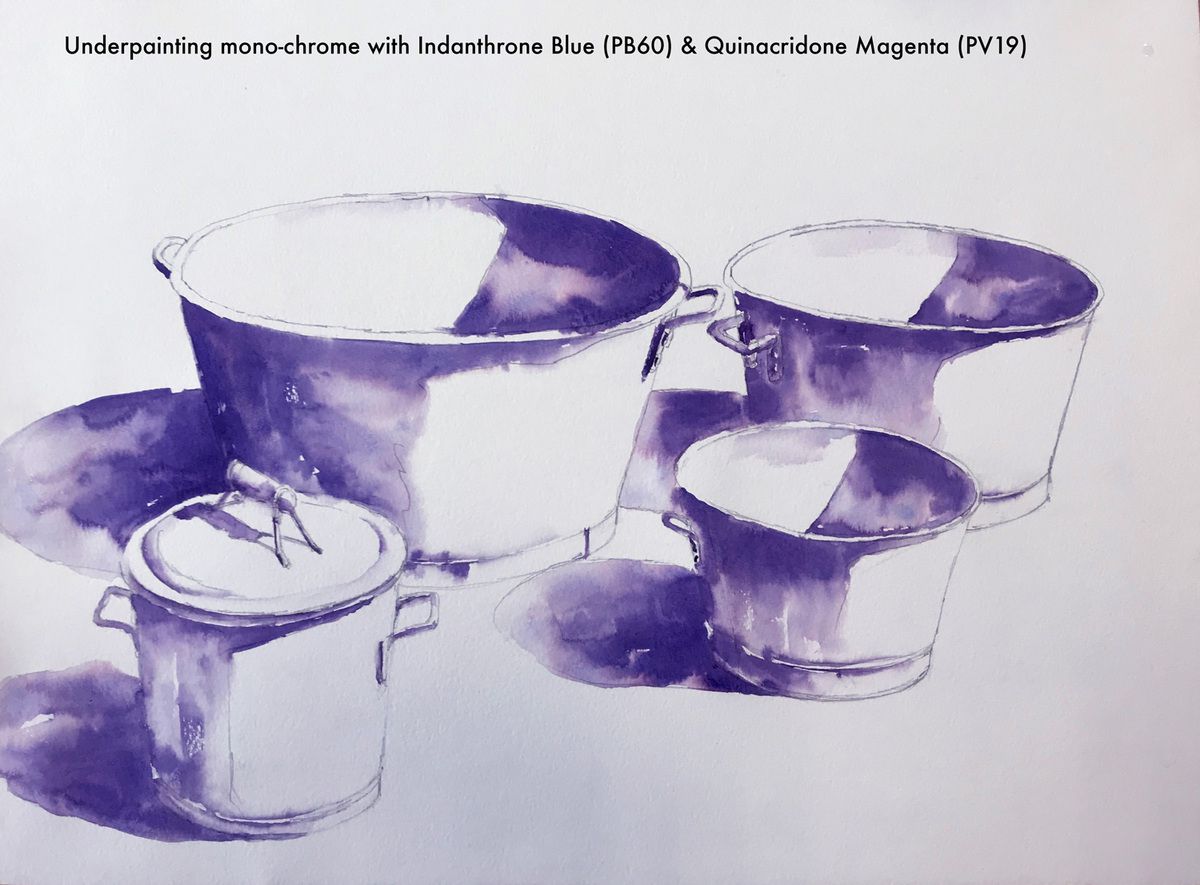
I think that purple, like orange, is a secondary color that is very easy to mix and therefore this color is not essential in a limited palette. On the other hand, some purple pigments have very interesting characteristics.
The PV16 manganese violet and the PV14 cobalt violet have a very fine granulation or even flocculation. Ultramarine violet has the same characteristic, but less pronounced as his cousin the ultramarine PB29.
But now back to our purple pigments.
As many of my readers and subscribers have asked, I give you an explanation of the individual swatches to better guide you and analyze my work on pigments.
Here is the link to the article that explains everything.
Open it in a new tab so you can view it by keeping this page open.
The link http://www.desireherman.com/abrevations.html
Now coming to our pigments. Only a good ten purple pigments are used in our watercolors.
Here are their specificities and appearances.
Pigment PV3 Methyl Violet
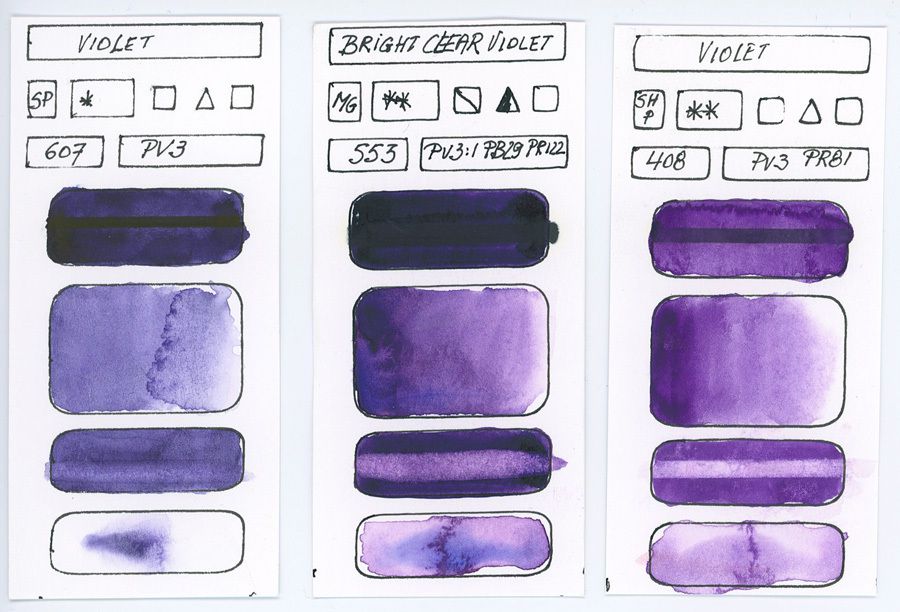
It is a pigment rarely used in the manufacture of watercolor quality, not only this pigment is fleeting but also toxic. It is used in the fields of medicine for these qualities fungicidal, bactericidal and has the characteristic of killing living cells.
To date, I have found this pigment only in the Asian watercolor Mission Gold and ShinHan and the Russian brand Saint Petersburg.
It goes without saying that I advise you not to use them because your watercolors made with this pigment will quickly lose their vibrancy and will tone down to become dull.
Pigment PV13 Anthraquinone Naphtol
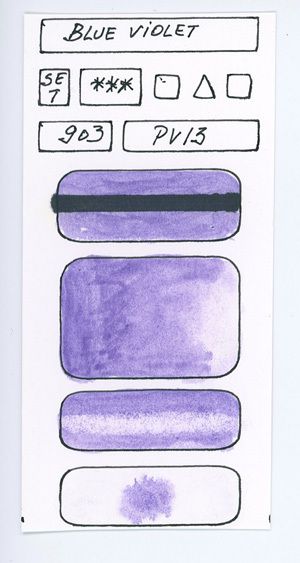
This lavenderish violet pigment is very light and doesn’t tint very much, it is granular and transparent. It also has excellent resistance to light. This pigment produces a color that is not very dense and difficult to spread evenly.
Currently, I have found only one manufacturer that uses this pigment.
PV14 Cobalt Phosphate
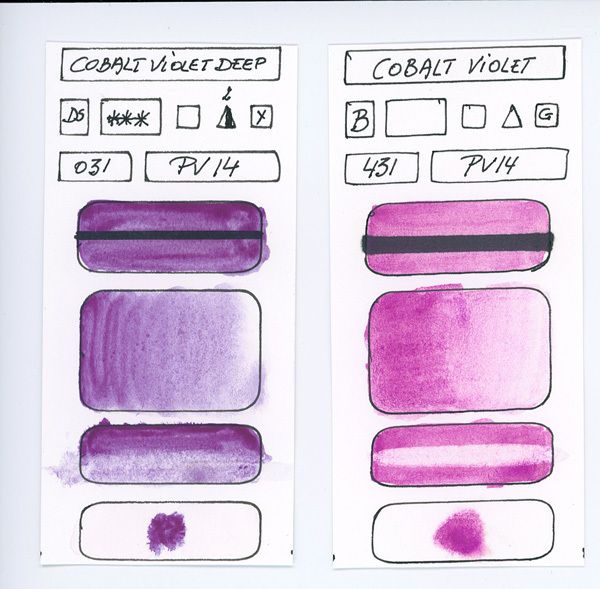
Cobalt violet is one of the most expensive pigments. Because of this it is not often available and proposed only by some manufacturers.
This violet is semi-opaque, semi-transparent, has a very good to excellent resistance to light and does not tint the paper (easy to lift). But the most interesting is its property of flocculation and granulation that allow creating structures.
This pigment varies enormously. Blockx's PV14 is more dominant pink while Daniel Smith is darker, more neutral and bluish but more tinting.
As a pigment mixture, it is found that the granulation decreases and that the shades widen from pink to pure violet.
Given the price and the relative rarity of this pigment, you have to decide if buying this paint is really worth it for you. But if you are looking for granulation I recommend the use of PV16 less expensive.
PV15 Ultramarine Violet

According to the manufacturers the watercolor paints manufactured are not very covering to more covering (Blockx & Isaro). This violet is a purple with blue tendency, but some are more pinkish.
Lightfastness is very good to excellent, most are grannulating and are staining to moderate staining. According to the brands one manages to lift the color well.
It is a medium chroma violet, less grannulating than the manganese or cobalt violet but it is bluer while the PV14 & PV16 have reddish undertones.
However this shade is easily obtained in a mixture of a ultramarine blue PB29 with a PV19.
PV16 Manganese Violet
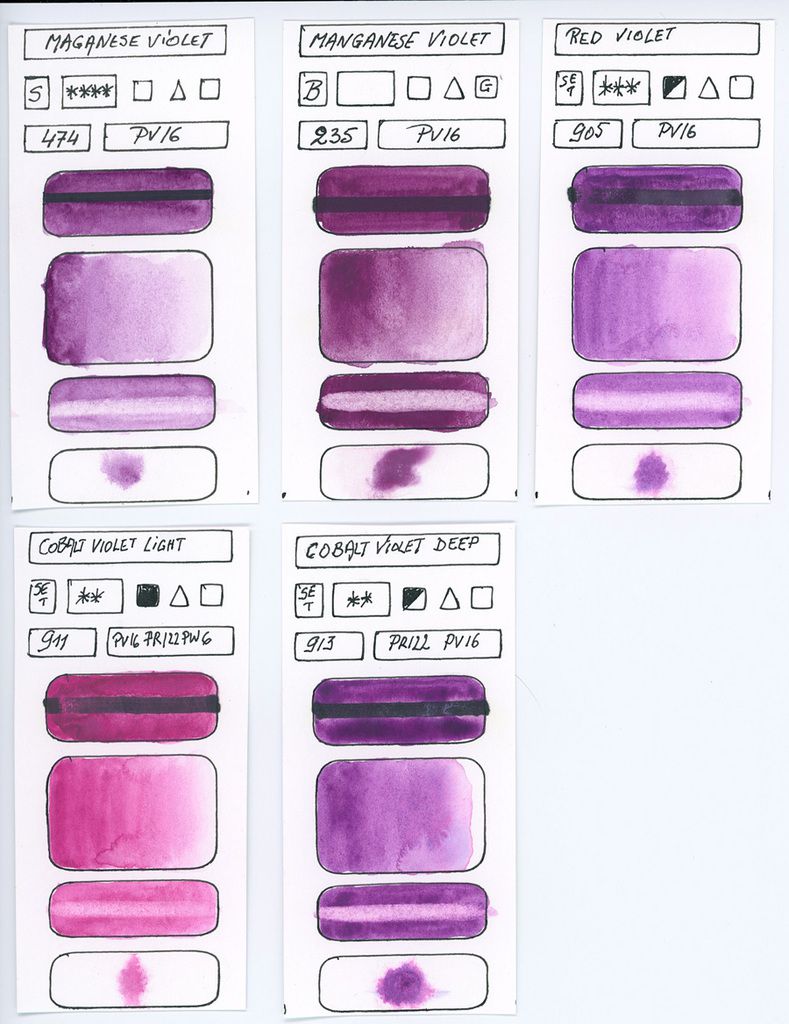
A rather dense violet of a medium chroma, very little staining, of excellent resistance to the light with a beautiful granulation.
The hue always has a very marked reddish sub-tone at Blockx and less at Schmincke and Sennelier.
You can get beautiful dark tones using the paint coming out of the tube.
As for PV14 PV16 is a heavy component and it can be seen that by opening a tube, gum arabic can separate from the pigment (This issue is also found with cerulean blue PB 35 & 36)
This pigment is one of the most beautiful purples, very nuanced and sweet and I think it should be in the palette of botanical watercolorists.
Quinacridone PV19
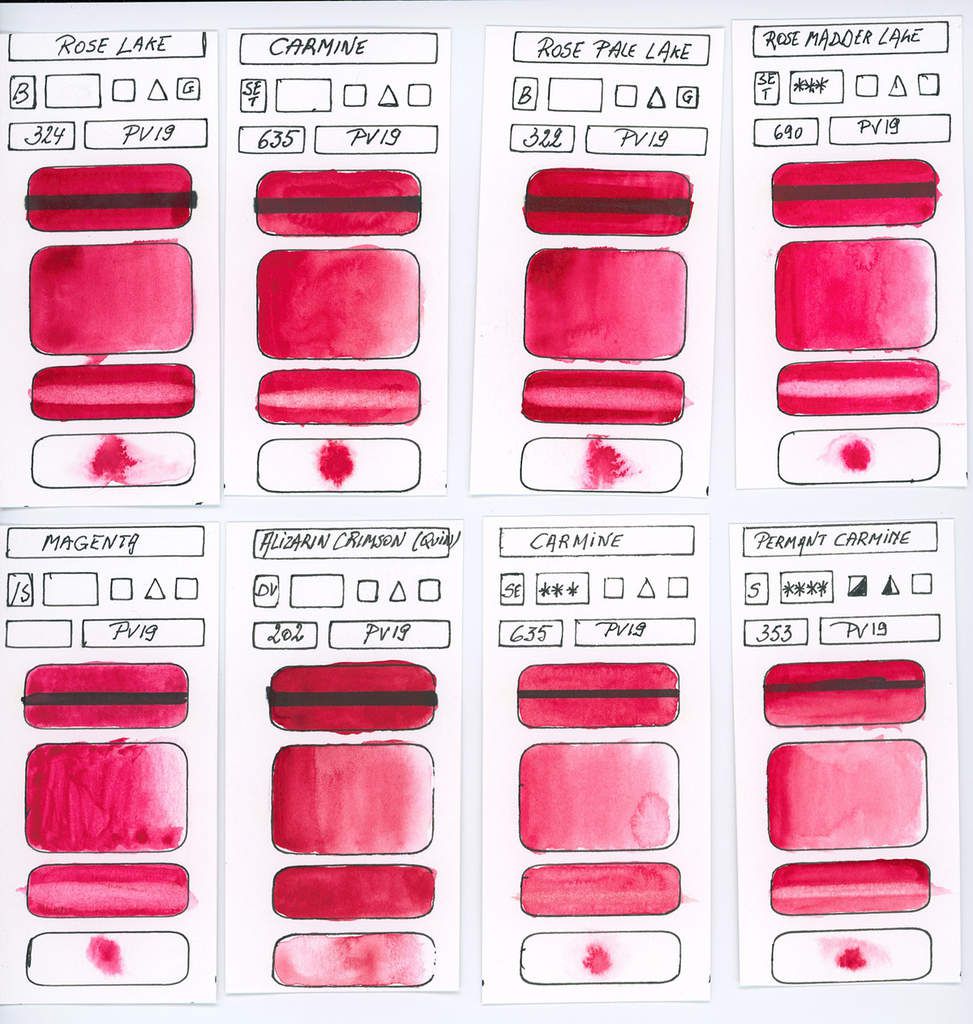

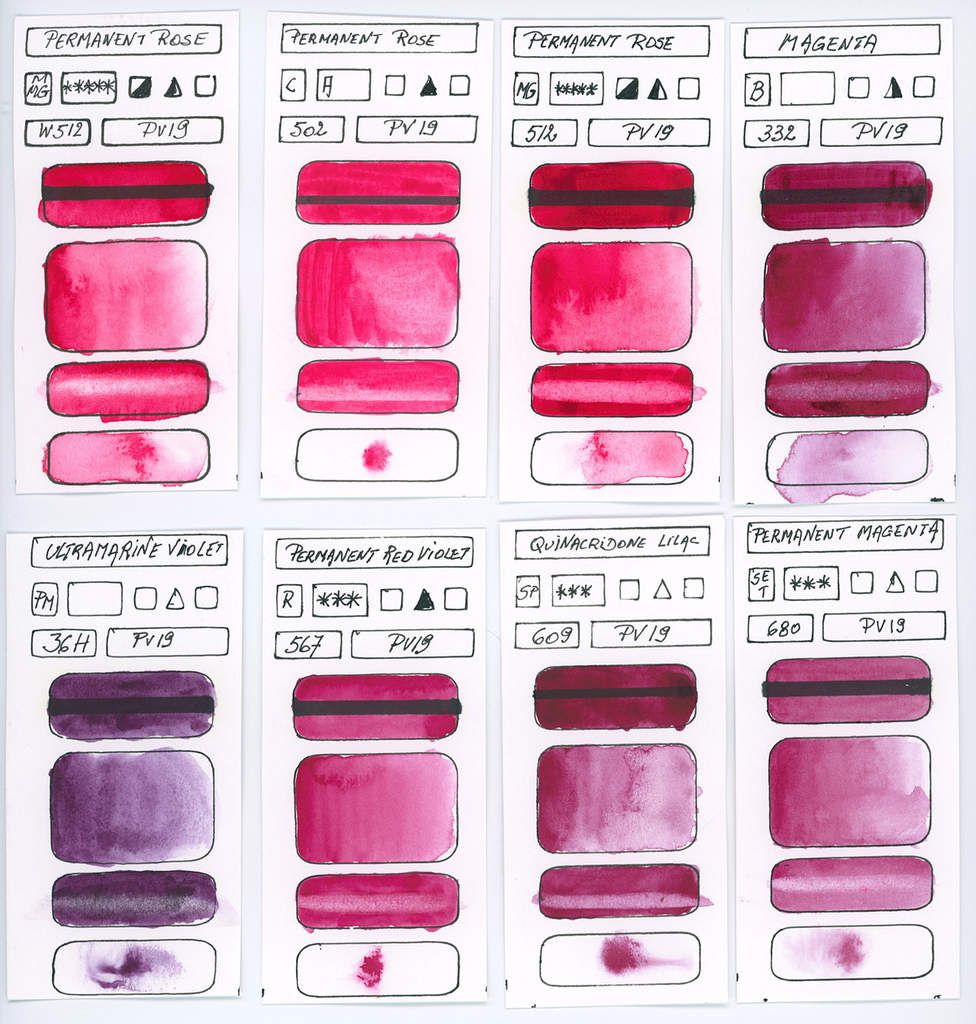


This pigment is one of the most used in today's watercolor. Rich in color and very tinting, transparent and often of excellent resistance to the light, this pigment has also a good flow and has a beautiful behavior in the mixtures.
The hue varies according to the marks and goes from a Rose or Red to a reddish purple. Often labeled as Magenta.
The PV19 is warmer than the PR122 Magenta which makes blends with blues duller less vibrant, some say more natural ...
For some, this pigment is a primary pigment, yes… mixing with a warm yellow, we get red ... supposed to be impossible to mix!
One observation nevertheless, the light resistance of quinacridones is normally excellent, but various authors have noted the degradation of some brands.
I advise you to do tests with your own paintings to be sure of their behavior.
PV23 Violet Dioxazine
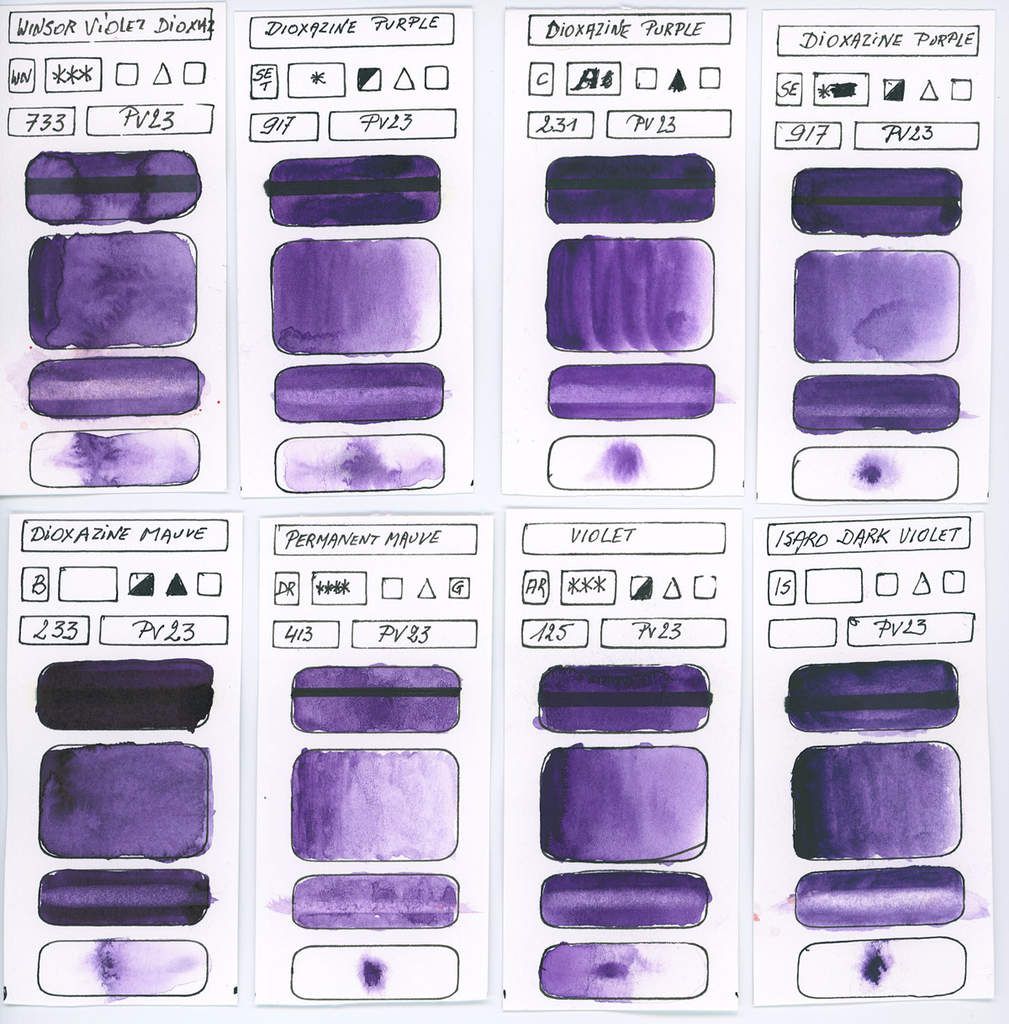

This violet is very dark and one of the most concentrated pigments. Like Phthalos PB15 and PG7 this pigment will quickly dominate all other pigments in a mixture.
Find the good relation water/paint and always test on a piece of paper before putting your brush on your work. It is very staining, so difficult to correct!
Otherwise, this pigment has excellent or very good resistance to light (be careful some brands seem to be less stable). There are also differences in transparency, which varies from semi-transparent to semi-opaque.
Although the bluish version is the most often used, this pigment is also available in a pinkish version.
PV29 Perylene Violet
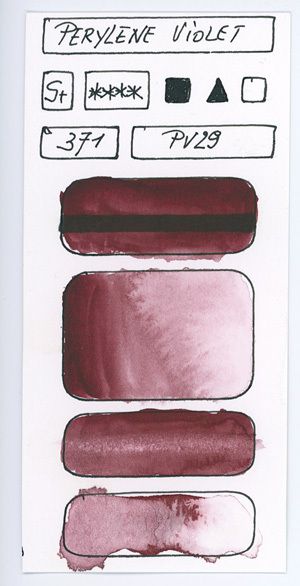
This purplish brown is a very good replacement for brown madder.
Very dark and very tinting and excellent resistance to light, this pigment tends to stand and lose drying almost 30% of its brightness and chroma.
Yet this pigment is one of my favorites because in combination with the PBK31 Perylene Green we obtain very deep neutral and black mixtures without the dullness that other PBk blacks produce.
I only listed samples from Schmincke, but I will update this article soon with the pigment from Winsor & Newton.
PV32 Benzimidazolone (Bordeaux)
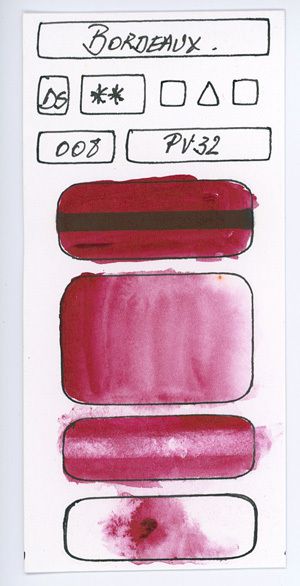
Pigment currently available in watercolor only at Daniel Smith. This dark reddish-purple of medium tone is transparent, moderately tinting (easy to lift or correct) and has very good resistance to light.
Personally, I find this pigment very interesting as a replacement for Alizarin crimson or Madder Brown or red. More stable, easier to correct and above all a better resistance to light.
PV42 Magenta Quinacridone
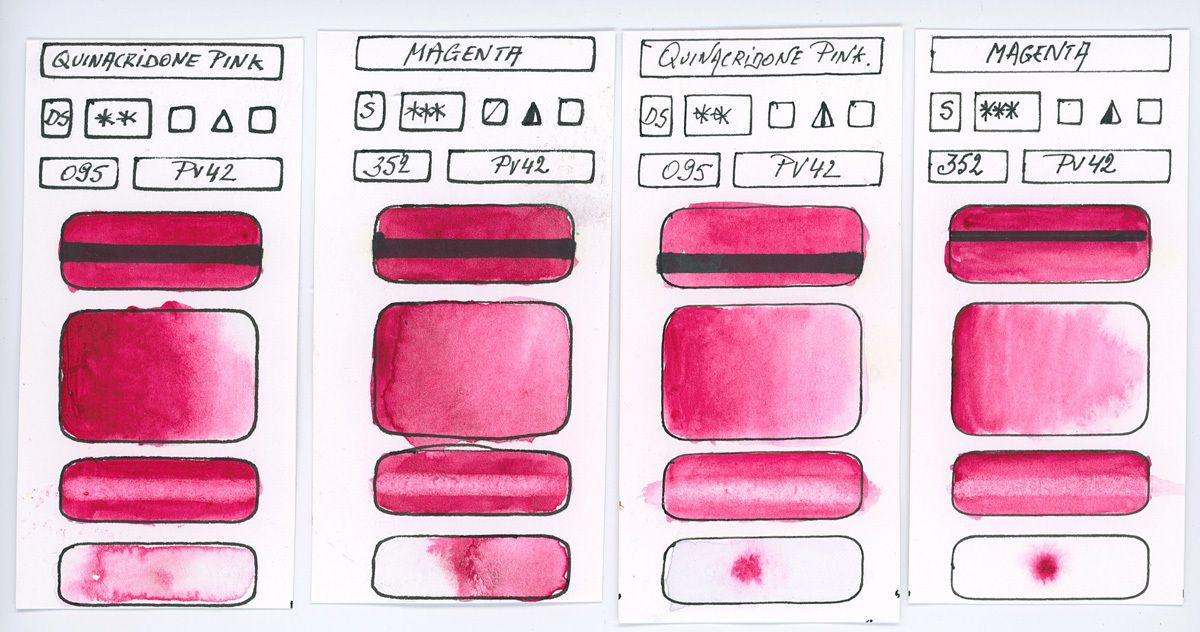
This quinacridone pigment is more neutral, less warm than the PV19.
Located between the PV19 and the PR122 this quinacridone seems to be less tinting and can be considered a cold red. To get a purple from this pigment we will see the results in the next article.
Given the number of different hues in red and pink currently available, it is very difficult to make a choice. I recommend you to look carefully at the mix tables I made and to get an idea of what's right for you.
PV 55 Quinacridone
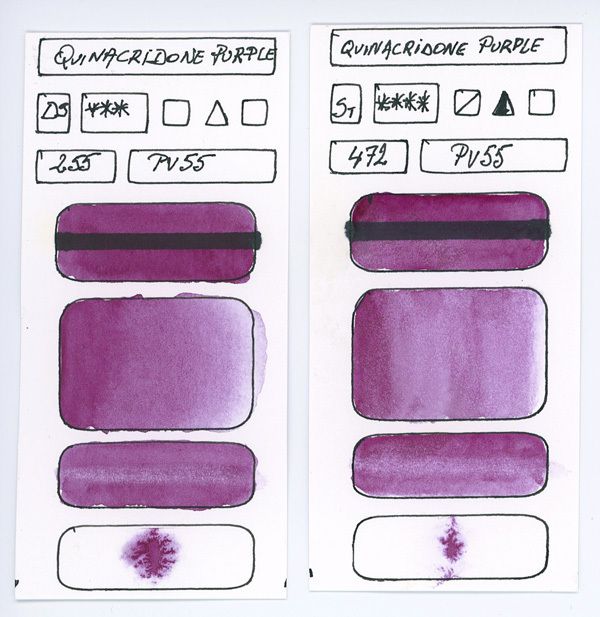
This quinacridone Violet is much more subtle than PV23. It is less invasive, very staining but transparent and has excellent resistance to light.
So I prefer it to PV29. As it is a recent pigment, only the big manufacturers propose it.
Here are the eleven purple pigments of which I made samples. Below you find a summary table of all these purple pigments.
Here are some other sw<atches from brands that didn't inform on the pigment composition.
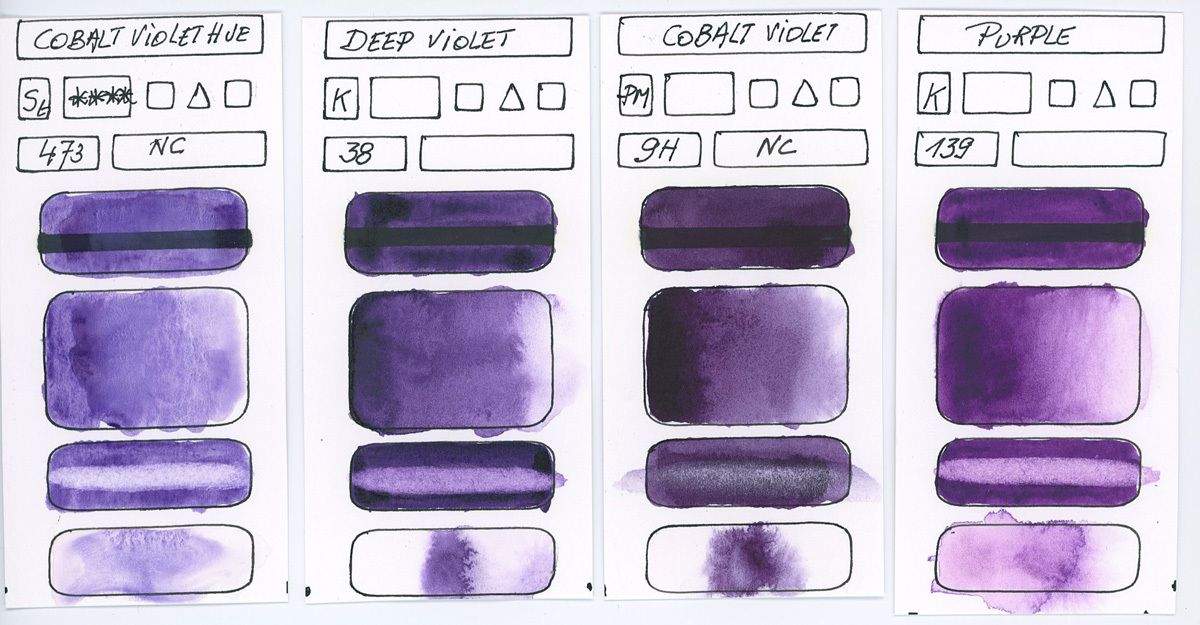
I'm sorry I could not show you more, but since I'm not sponsored or helped by the manufacturers, I have to buy all the material I'm testing ...
As a result, in the future, I will have more paintings and I will gradually update my pages on pigments by adding new samples.
If you are passionate manufacturer or reader, and want to send me samples or watercolor tubes that are not listed yet, feel free to contact me by message on this blog.
Now I'm preparing mix charts with my comments. I will do, as for oranges, two paintings the first showing mixtures of red and blue to obtain violets and the second showing the results of the mixtures of the violets with the other colors primary and secondary.
See you soon.
